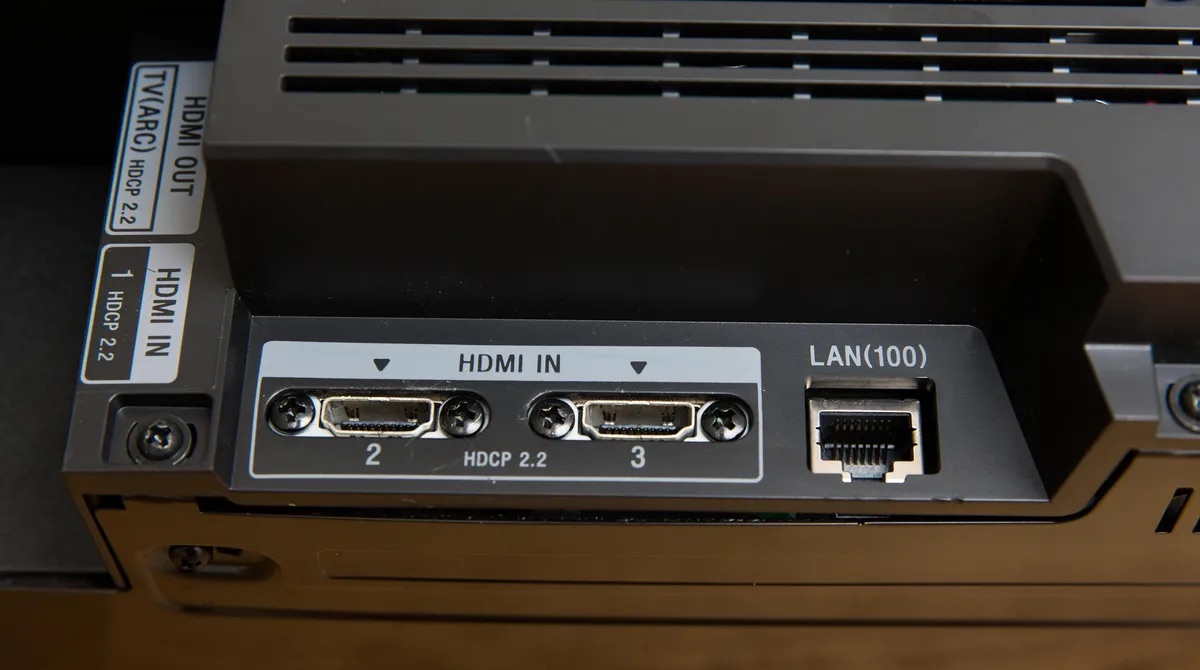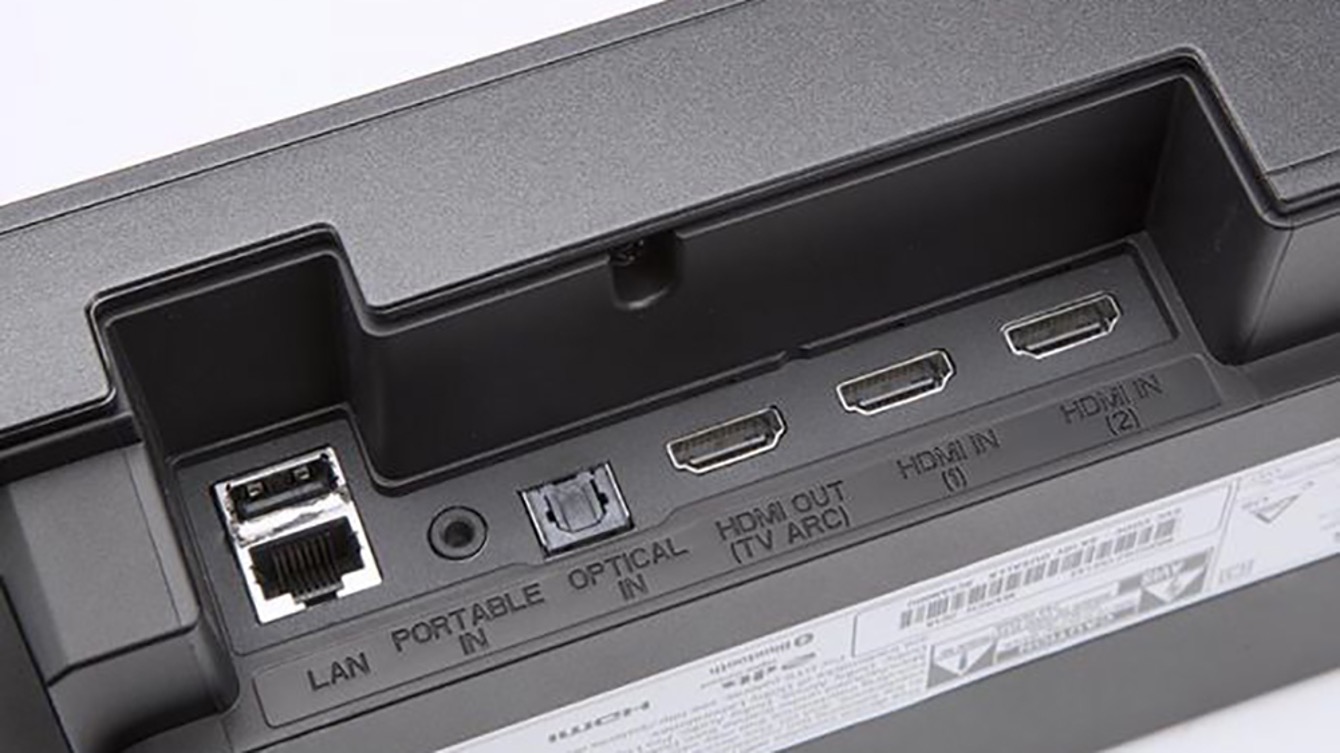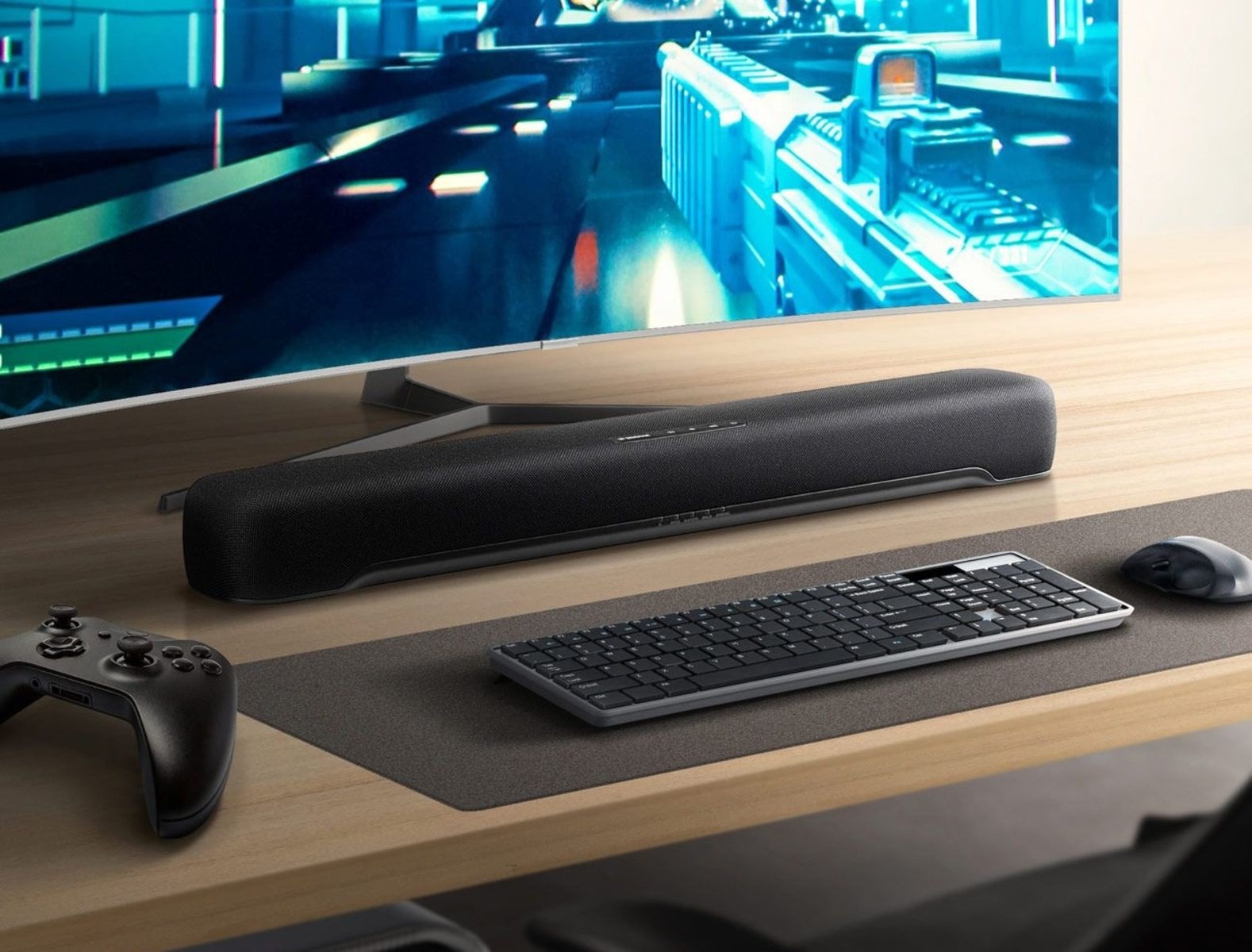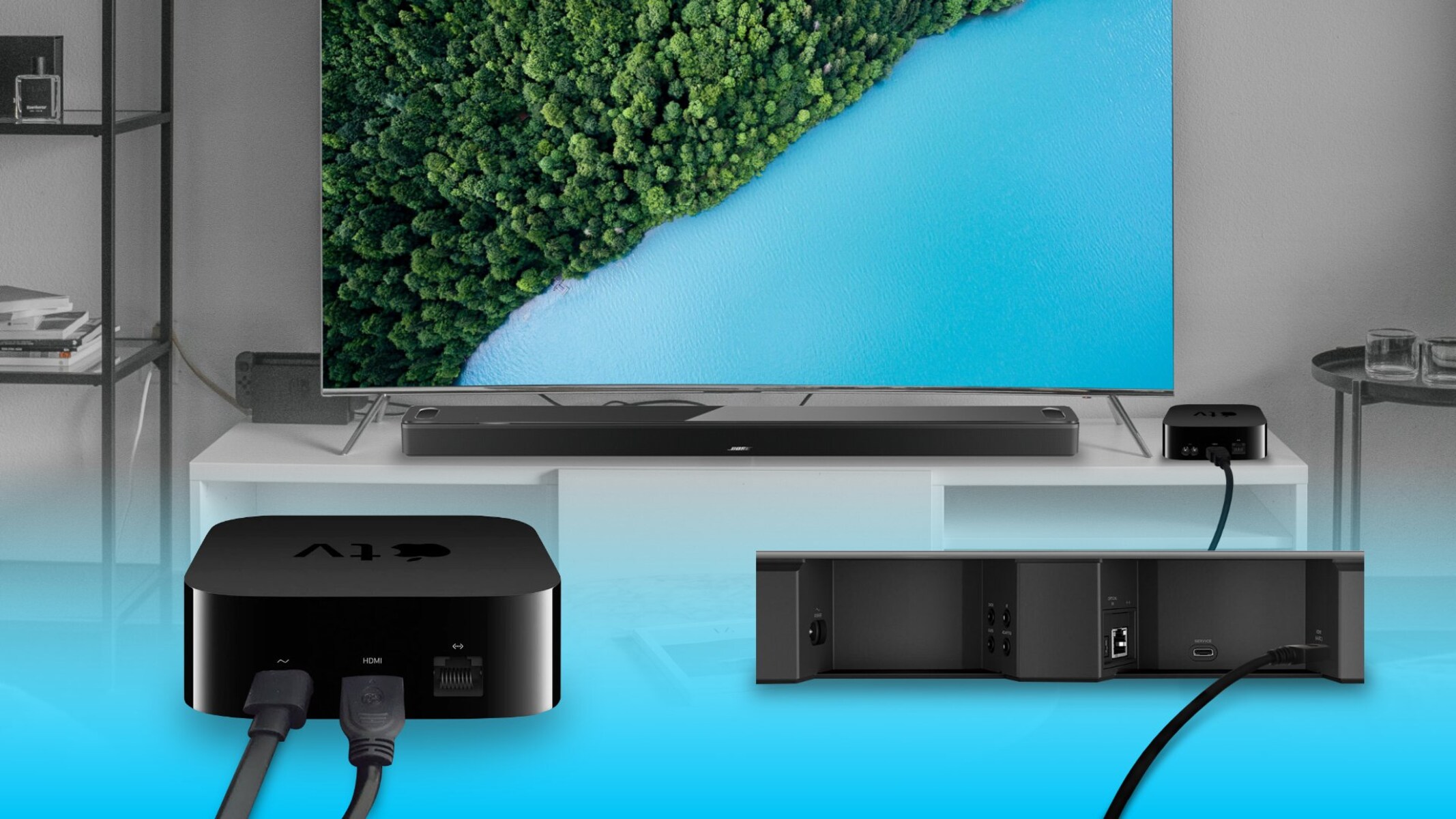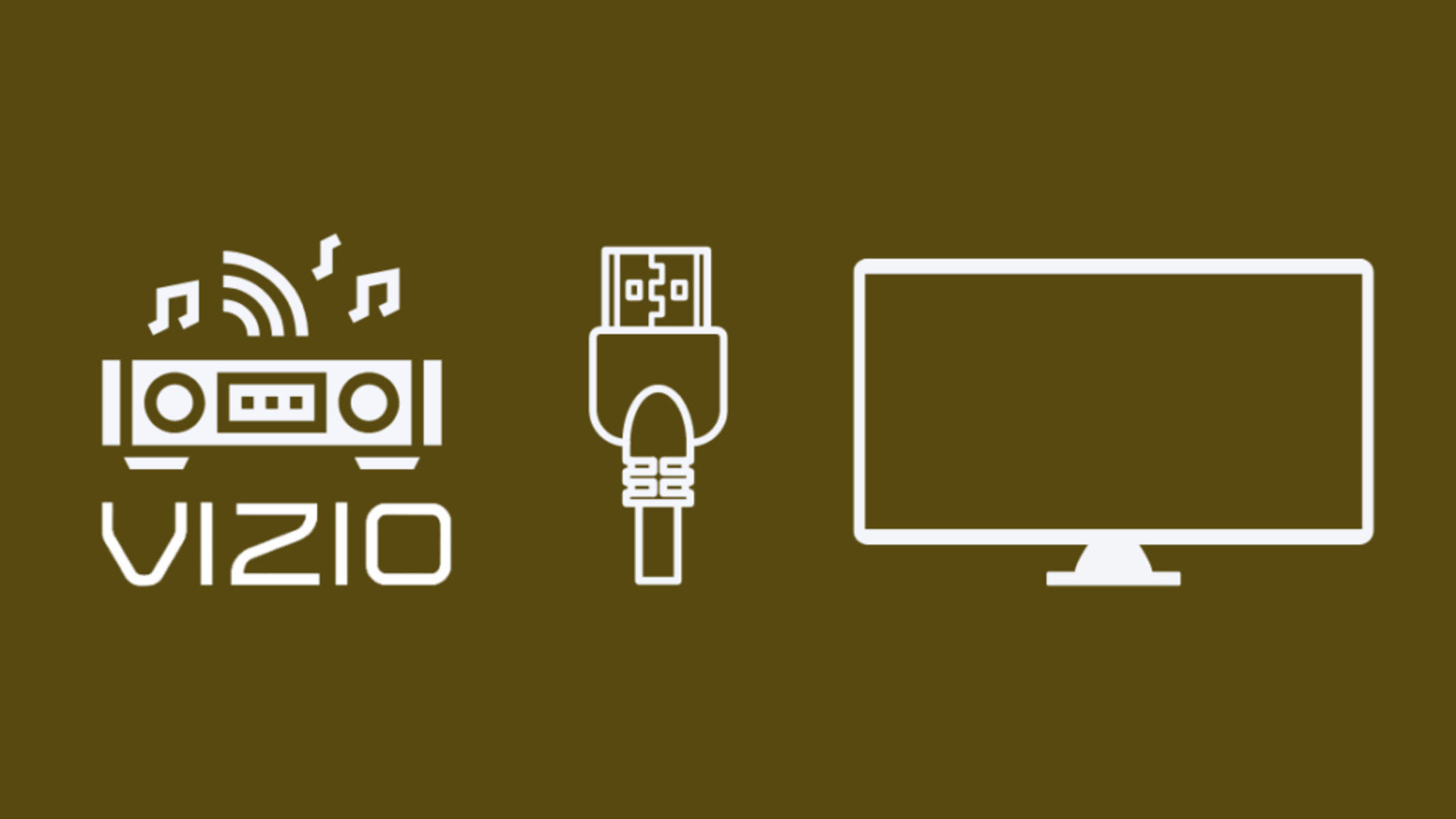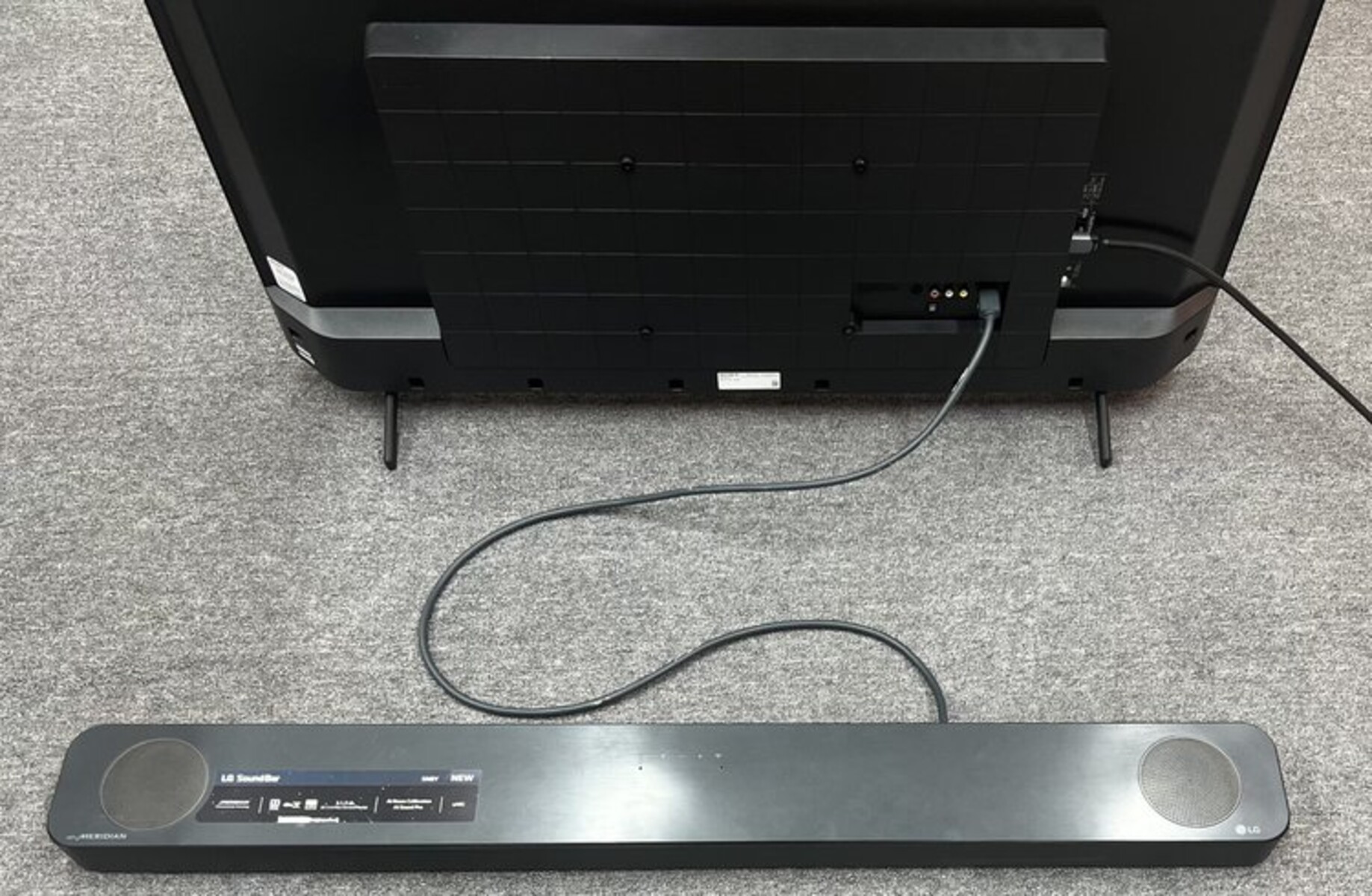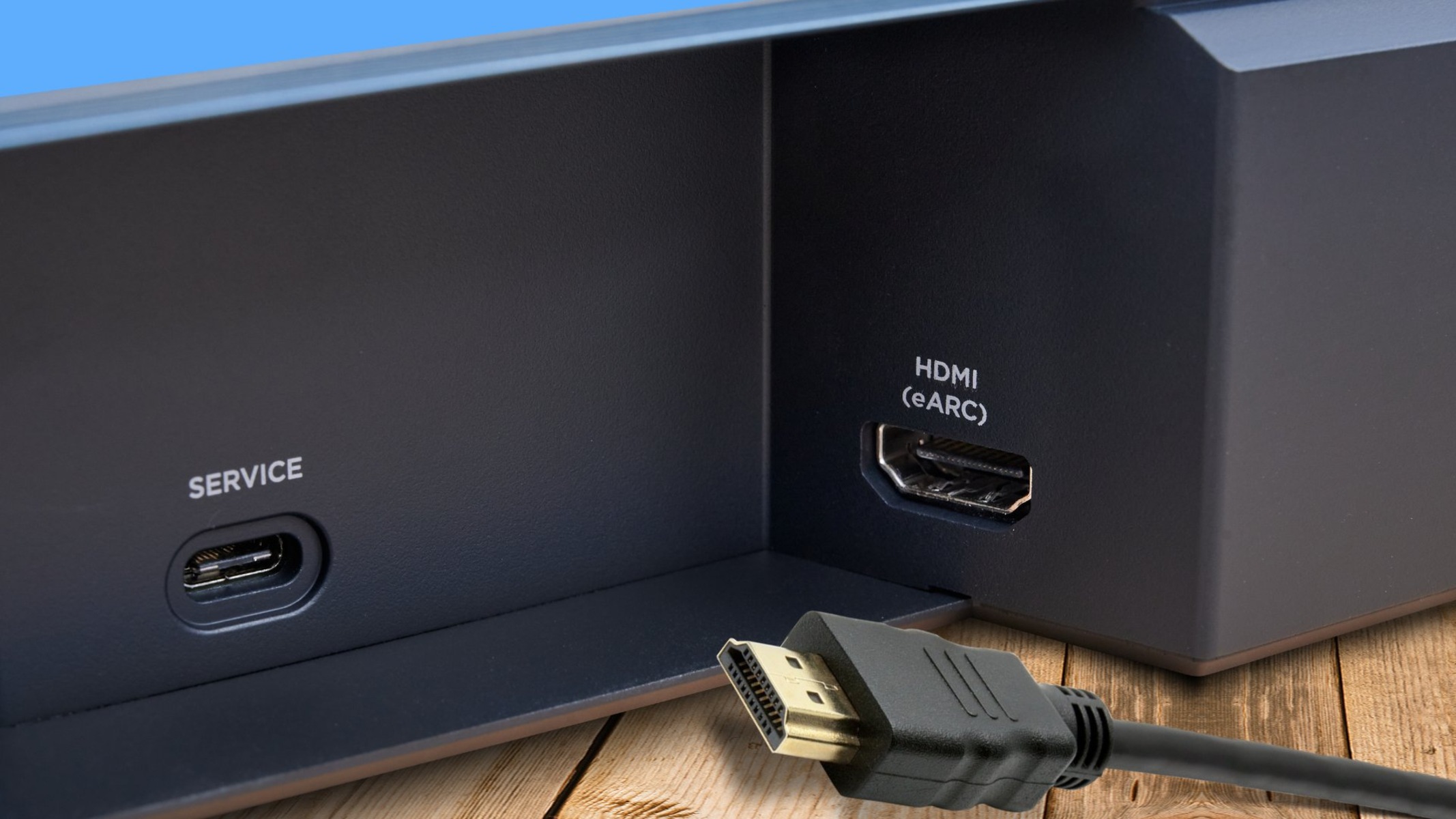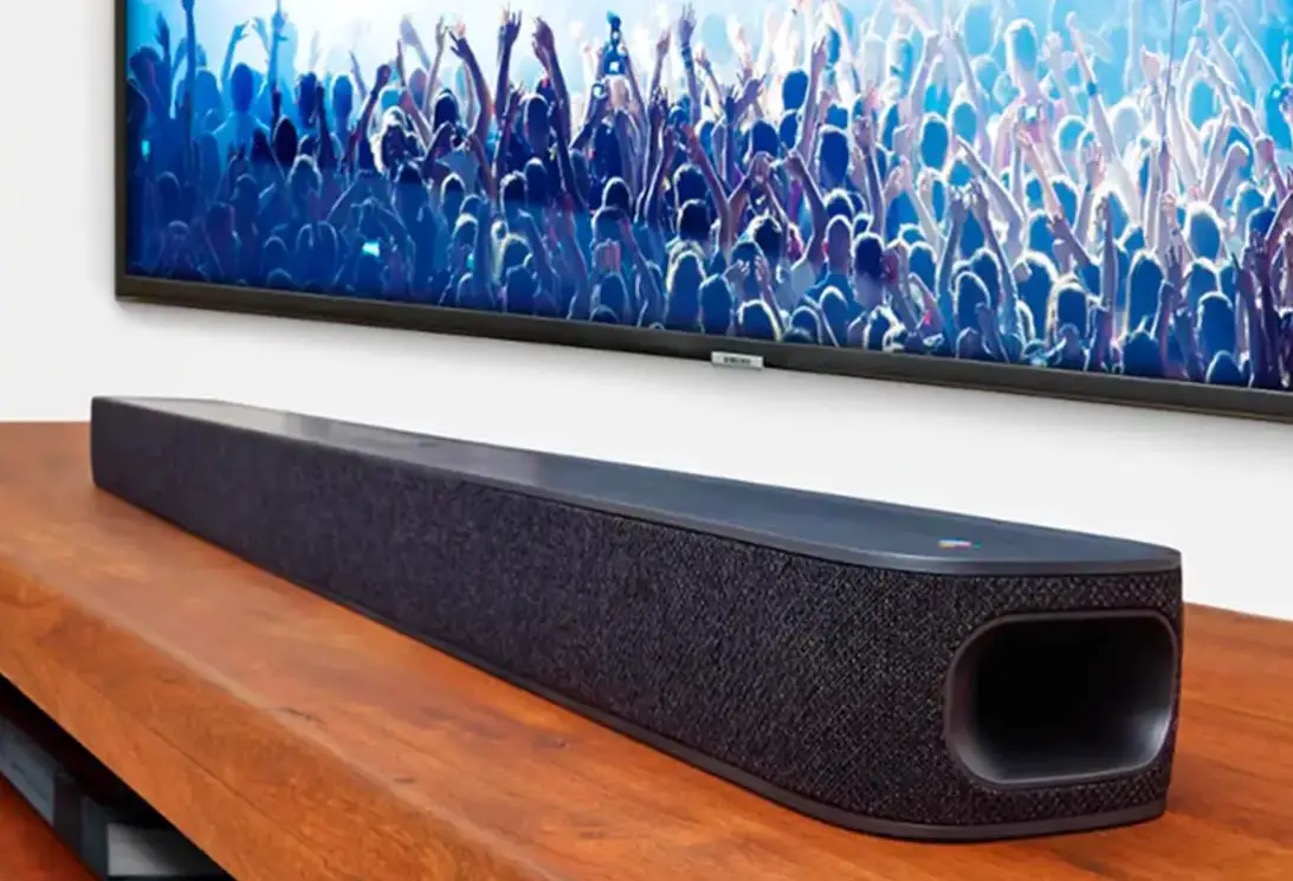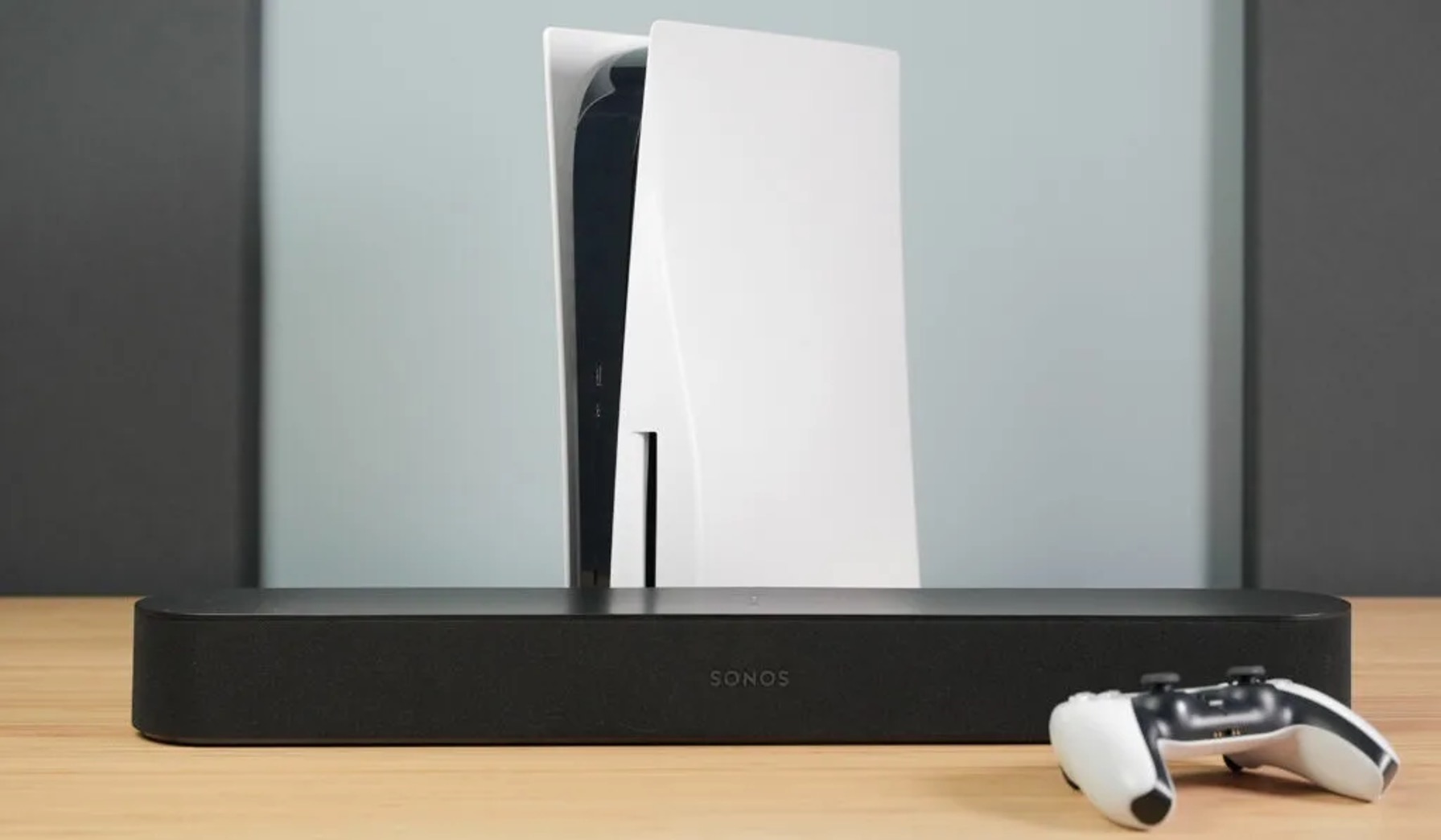Introduction
Welcome to the world of home entertainment! As technology continues to advance, so do the options available to enhance our audiovisual experiences. One such innovation is the HDMI (High-Definition Multimedia Interface) standard, which has become the go-to choice for connecting various devices to our TVs and sound systems.
In this article, we will explore the concept of HDMI Out on a soundbar. Whether you’re a tech enthusiast or just starting to delve into the world of audio equipment, understanding the purpose and benefits of HDMI Out is crucial. So, let’s dive in and unravel the mysteries of this frequently used term in the realm of home theater systems.
HDMI Out refers to the HDMI output port found on a soundbar. It is an essential feature that allows you to connect your soundbar to other devices, such as your TV, gaming console, Blu-ray player, or streaming device. The HDMI Out port on a soundbar acts as a bridge, enabling the soundbar to receive audio signals from these connected sources and deliver enhanced sound quality to your entertainment setup.
Many modern soundbars come equipped with HDMI Out, offering a more streamlined and convenient connectivity solution. Instead of relying on multiple cables and connections, you can simplify your setup by utilizing the HDMI Out port on your soundbar.
Now that we have a basic understanding of what HDMI Out is, let’s explore its purposes in the next section.
What is HDMI Out?
HDMI Out, also known as HDMI Output, is a feature found on soundbars and other audio equipment. It is a port that allows you to connect your soundbar to other devices using an HDMI cable. The HDMI Out port acts as a transmitter, sending audio signals from the soundbar to the connected device, such as a television or AV receiver.
HDMI Out is different from HDMI In, which is another common port found on soundbars and other devices. HDMI In allows you to connect external audio or video sources to the soundbar, while HDMI Out allows you to send the audio signal from the soundbar to another device.
By using HDMI Out, you can enjoy a seamless audio experience with your entertainment setup. It eliminates the need for multiple cable connections and provides a single, high-quality audio connection between your soundbar and the television or other audio/video devices.
With HDMI Out, you can take advantage of the advanced audio capabilities offered by your soundbar. It allows you to experience immersive surround sound, enhanced clarity, and richer audio detail, all through a single HDMI cable connection.
Additionally, HDMI Out supports the latest audio formats, including Dolby Atmos and DTS:X, providing an even more immersive sound experience. These formats deliver three-dimensional audio, making you feel like you’re right in the middle of the action.
Overall, HDMI Out on a soundbar is a powerful feature that enhances your audio setup by providing a high-quality, single-cable connection between your soundbar and other devices. It simplifies your home theater setup and ensures that you can enjoy the best audio performance possible.
In the next section, we’ll delve into the purpose of HDMI Out on a soundbar.
The Purpose of HDMI Out on a Soundbar
The HDMI Out port on a soundbar serves multiple purposes, all aimed at enhancing your audiovisual experience. Let’s explore some of the key purposes of HDMI Out:
- Audio Transmission: The primary purpose of HDMI Out on a soundbar is to transmit audio signals from the soundbar to a connected device, such as a television. It allows you to enjoy the high-quality sound produced by your soundbar through your TV speakers or other connected audio devices. This ensures that you get the most out of your audio equipment and have a more immersive audio experience while watching movies, playing games, or listening to music.
- Single Cable Connection: HDMI Out provides a convenient solution for simplifying your audio setup. Instead of dealing with multiple cables and connections, HDMI Out allows you to connect your soundbar to your TV or AV receiver using a single HDMI cable. This not only reduces cable clutter but also makes it easier to switch between different audio sources without the hassle of reconnecting cables.
- Audio Return Channel (ARC) Support: HDMI Out often supports the Audio Return Channel (ARC) feature. ARC enables the soundbar to receive audio signals from the TV, eliminating the need for a separate audio cable. With ARC, you can enjoy audio from the TV apps, built-in smart features, or any external devices connected to the TV, all through the soundbar. This feature further enhances the convenience and functionality of HDMI Out on a soundbar.
- Advanced Audio Formats: HDMI Out allows for the transmission of advanced audio formats, such as Dolby Atmos and DTS:X. These formats provide a more immersive sound experience, with sound coming from all directions, including above and behind you. With HDMI Out supporting these formats, your soundbar can deliver a theater-like audio experience, making you feel like you’re part of the action on the screen.
- Control Options: HDMI Out also enables control options between your soundbar and other connected devices. By utilizing HDMI CEC (Consumer Electronics Control), you can control multiple devices through a single remote control. This means that when you adjust the volume or power on/off your TV, the commands are automatically communicated to your soundbar as well, creating a seamless and integrated control experience.
In summary, HDMI Out on a soundbar serves the purpose of transmitting audio signals to a connected device, offering a simplified setup with a single cable connection. It supports advanced audio formats and provides control options for a more integrated and immersive audiovisual experience.
In the next section, we will discuss the benefits of using HDMI Out on a soundbar.
Benefits of Using HDMI Out on a Soundbar
Using HDMI Out on a soundbar offers several advantages that can greatly enhance your audiovisual setup. Let’s explore some of the key benefits:
- High-Quality Audio: HDMI Out allows for the transmission of uncompressed or lossless audio signals from your soundbar to the connected device. This means that you can enjoy the highest quality audio with minimal signal degradation, resulting in clearer dialogue, immersive surround sound, and enhanced audio detail. Compared to other connection methods, such as optical or analog, HDMI Out provides superior audio performance.
- Simplified Setup: With HDMI Out, you can simplify your audio setup by using a single cable to connect your soundbar to the television or AV receiver. This eliminates the need for multiple cables and connections, reducing cable clutter and making it easier to set up and manage your audio equipment. It also allows for seamless switching between different audio sources without the hassle of reconnecting cables.
- Audio Return Channel (ARC) Support: HDMI Out often supports the ARC feature, which enables the soundbar to receive audio signals from the television. This eliminates the need for a separate audio cable and allows you to enjoy audio from the TV apps or any external devices connected to the TV, all through the soundbar. With ARC, you can have a streamlined audio setup and enjoy the benefits of your soundbar for all your TV content.
- Compatibility: HDMI is a widely adopted industry standard for audio and video transmission. This means that HDMI Out on your soundbar offers compatibility with a wide range of devices, including televisions, gaming consoles, Blu-ray players, and streaming devices. You can connect your soundbar to any HDMI-enabled device and enjoy high-quality audio without compatibility issues.
- Advanced Audio Formats: HDMI Out supports advanced audio formats, such as Dolby Atmos and DTS:X, which provide a more immersive sound experience. These formats create a three-dimensional audio environment, with sound coming from different directions, including above and behind you. By using HDMI Out, your soundbar can deliver these formats, bringing your movies, games, and music to life with enhanced depth and realism.
Overall, utilizing HDMI Out on a soundbar brings several benefits, including high-quality audio, simplified setup, compatibility with various devices, support for advanced audio formats, and the convenience of Audio Return Channel. These advantages contribute to an enhanced audiovisual experience and make HDMI Out an essential feature for any home theater setup.
In the next section, we will delve into the difference between HDMI ARC and HDMI Out.
HDMI ARC vs. HDMI Out: Understanding the Difference
When it comes to HDMI connectivity on soundbars, two terms that often come up are HDMI ARC (Audio Return Channel) and HDMI Out. While they may sound similar, they serve different functions. Let’s explore the difference between HDMI ARC and HDMI Out:
HDMI Out: HDMI Out, as we discussed earlier, refers to the HDMI output port on a soundbar. It allows you to connect your soundbar to other devices, such as your TV or AV receiver, using an HDMI cable. The purpose of HDMI Out is to transmit audio signals from the soundbar to the connected device, delivering high-quality sound and enhancing your audiovisual experience.
HDMI ARC (Audio Return Channel): HDMI ARC, on the other hand, is a feature that allows the soundbar to receive audio signals from the television. It is a bidirectional communication channel that enables the TV to send audio back to the soundbar, eliminating the need for a separate audio cable. With HDMI ARC, you can enjoy audio from the TV apps, built-in smart features, or any external devices connected to the TV, all through the soundbar.
The key distinction between HDMI ARC and HDMI Out is their direction of audio transmission. While HDMI Out sends audio signals from the soundbar to another device, HDMI ARC enables the soundbar to receive audio signals from the TV.
It’s important to note that not all soundbars have HDMI ARC functionality. However, if your soundbar and TV both support HDMI ARC, you can take advantage of this feature to simplify your audio setup and enjoy audio from various sources through the soundbar.
When setting up your soundbar with HDMI ARC, make sure to connect the HDMI cable to the HDMI ARC ports on both the soundbar and the TV. This allows for two-way communication between the devices and enables the soundbar to receive audio signals from the TV.
In summary, HDMI Out and HDMI ARC are two distinct features relating to HDMI connectivity on soundbars. HDMI Out allows the soundbar to transmit audio signals to another device, while HDMI ARC enables the soundbar to receive audio from the TV. The functionality of HDMI ARC can enhance the convenience and flexibility of your audio setup, provided that both your soundbar and TV support this feature.
Next, we will discuss how to connect HDMI Out on a soundbar.
How to Connect HDMI Out on a Soundbar
Connecting HDMI Out on a soundbar is a straightforward process that can greatly improve your audio experience. Here’s a step-by-step guide on how to connect HDMI Out on your soundbar:
- Check soundbar and TV compatibility: Ensure that both your soundbar and TV have HDMI ports. Additionally, check if your soundbar supports HDMI ARC if you plan to utilize that feature.
- Power off all devices: Before connecting any cables, turn off your soundbar, TV, and any other relevant devices.
- Identify the HDMI Out port: Locate the HDMI Out port on your soundbar. It is usually labeled as “HDMI Out” or “HDMI Output”.
- Connect the HDMI cable: Take one end of the HDMI cable and plug it into the HDMI Out port on your soundbar.
- Connect the other end of the HDMI cable: Plug the other end of the HDMI cable into an available HDMI input port on your TV.
- Optional: Connect additional devices: If you have other devices, such as a gaming console or Blu-ray player, that you want to connect to the soundbar, use additional HDMI cables to connect them to the HDMI In ports on the soundbar.
- Power on the devices: Now that the HDMI connections are in place, turn on your soundbar, TV, and any connected devices.
- Switch the TV input: On your TV remote, select the appropriate input source to access the soundbar audio. This may be labeled as the HDMI input where the HDMI Out from the soundbar is connected.
- Configure HDMI ARC (optional): If your soundbar and TV both support HDMI ARC, you can enable this feature in the TV settings menu. Refer to the user manuals of your soundbar and TV for instructions on how to enable and configure HDMI ARC.
- Test the audio: Play some audio content on your TV and ensure that you’re hearing sound through the soundbar. Adjust the volume and other settings as needed on the soundbar and TV.
That’s it! Following these steps will help you successfully connect the HDMI Out on your soundbar. With the HDMI connection established, you can now enjoy enhanced audio quality and a more immersive audiovisual experience.
In case you encounter any issues with the HDMI connection or audio setup, the next section will provide some troubleshooting tips.
Troubleshooting HDMI Out Issues on a Soundbar
While connecting HDMI Out on a soundbar is generally a simple process, you may encounter occasional issues. Here are some common troubleshooting tips to help you resolve HDMI Out issues:
- Check cable connections: Ensure that the HDMI cable is securely plugged into the HDMI Out port on the soundbar and the HDMI input port on your TV. Loose connections can cause audio dropouts or no sound at all.
- Verify power status: Make sure that both the soundbar and the TV are powered on. It’s also worth checking if there are any power-related issues, such as an unplugged power cable or a blown fuse.
- Try a different HDMI cable: In some cases, a faulty or damaged HDMI cable can cause issues with the audio signal. Try using a different HDMI cable to see if that resolves the problem.
- Check HDMI ARC compatibility: If you are using HDMI ARC, verify that both your soundbar and TV support this feature. Additionally, make sure that you have enabled HDMI ARC in both the soundbar and TV settings.
- Update firmware: Check for any firmware updates for your soundbar and TV. Manufacturers often release firmware updates to address compatibility issues and improve overall performance.
- Reset the devices: Try resetting both the soundbar and TV to their default settings. This can help resolve any temporary glitches or conflicts that may be affecting the HDMI Out connection.
- Disable CEC (Consumer Electronics Control): Sometimes, the CEC feature, which allows control of multiple devices through a single remote, can cause HDMI communication issues. Try disabling CEC on both the soundbar and TV and see if that resolves the problem.
- Contact customer support: If you’ve tried the above troubleshooting steps and are still experiencing issues, reach out to the customer support of your soundbar or TV manufacturer. They can provide further assistance and guidance specific to your device.
Remember, each soundbar and TV setup can have unique factors that influence the HDMI Out functionality. It’s important to refer to the user manuals and support resources provided by the manufacturers for detailed troubleshooting steps tailored to your specific equipment.
By following these troubleshooting tips, you can address common HDMI Out issues and ensure a smooth and reliable audio connection between your soundbar and TV.
Now that we’ve explored troubleshooting HDMI Out issues, let’s conclude our article.
Conclusion
In conclusion, HDMI Out on a soundbar is a crucial feature that enhances your audiovisual experience by providing a high-quality audio connection between your soundbar and other devices. With HDMI Out, you can enjoy immersive surround sound, advanced audio formats, and simplified cable management.
We learned that HDMI Out allows you to transmit audio signals from the soundbar to a connected device, such as a TV or AV receiver. It simplifies your setup by using a single HDMI cable and supports advanced audio formats like Dolby Atmos and DTS:X for a more immersive audio experience.
HDMI ARC, on the other hand, enables the soundbar to receive audio signals from the TV, providing a bidirectional audio connection. It simplifies the setup even further and allows you to enjoy audio from diverse sources all through your soundbar.
By following the steps to connect HDMI Out on your soundbar, you can improve your audio quality and enjoy a more seamless audiovisual experience. In case of any issues, troubleshooting tips like checking cable connections, verifying power status, and updating firmware can help resolve HDMI Out problems.
Remember to refer to the user manuals and support resources provided by your soundbar and TV manufacturers for device-specific instructions.
In conclusion, HDMI Out is a valuable feature that enhances your home entertainment setup, offering high-quality audio, simplified connection options, and compatibility with various devices. Incorporating HDMI Out into your audio setup can elevate your overall audiovisual experience and immerse you in a world of crisp sound and enhanced entertainment.







